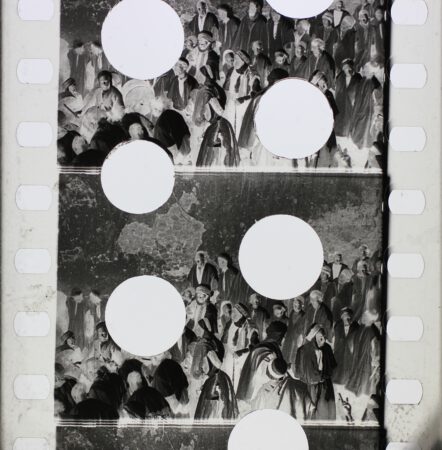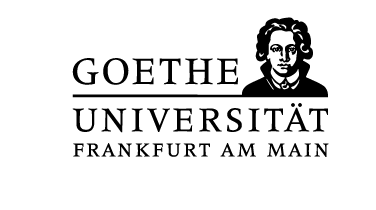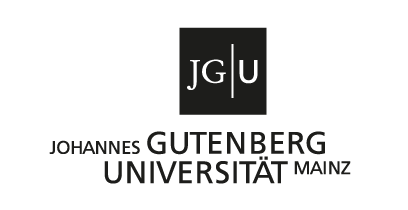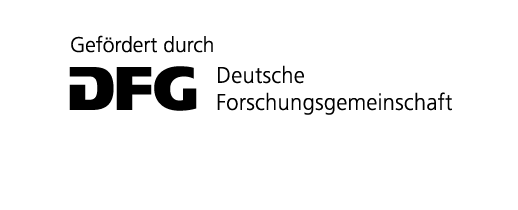
MOVING IMAGE REMAINS: ON THE REFUSAL TO DISAPPEAR
International Conference
January 29–31, 2026
Goethe University Campus Westend, Frankfurt
Registration (until 14 January 2026):
https://forms.gle/hezvvQtA1wpWGAhX6
Find the full program here.
Absence dictates what we know, presence what we forget. In the realm of film and media the rediscovery of neglected fragments, traces of unfinished projects, and suppressed narratives offer a powerful means for unsettling dominant accounts. The international conference Moving Image Remains: On the Refusal to Disappear explores how material and immaterial remnants of film and media challenge dominant narratives and temporalities. Engaging with ghosted histories, unfinished projects, and marginal perspectives, the event examines the politics of remaining across archival, cinematic, and aesthetic practices. It brings together scholars, artists, curators, and activists to discuss how traces, absences, and afterlives of the moving image shape our understanding of media history and cultural memory. The conference is hosted by the DFG Research Training Group 2279 Configurations of Film in collaboration with Produktionshaus NAXOS, Mal Seh’n Kino, and partner institutions.
Wednesday, January 28
19:30
Incomplete Lives, Lost Memories
Pre-Conference Event Screening at naxos.Kino
Introduction: Katharina Jost (Goethe University Frankfurt), Nils Meyn (Johannes Gutenberg-University Mainz)
- Lloyd Wong, Unfinished (Canada 2025 | Director, Producer, Writer: Lesley Loksi Chan | 29 min)
- La photo retrouvée (France 2024 | Director, Writer: Pierre Primetens | 76 min)
Thursday, January 29
10:30 – 11:00
Arrival and Registration
Trude Simonsohn und Irmgard Heydorn-Saal
11:15 – 12:00
Opening Remarks and Thanks
12:00 – 13:30
Panel 1: Spectral Urgencies
Moderation: Marie Malina (Goethe University Frankfurt)
- François Yazbeck (Aalto University)
The Afterlife of Memory on Screen: Postmemory and Erasure - Josefine Hetterich (Gutenberg University Mainz)
AIDS Media’s Moving Afterlives: Memory, Vulnerability, Solidarity - Miguel Errazu (Goldsmiths, University of London)
Reconsidering Reactivation: Bolivian Film Archives and Spectral Hope
13:30 – 15:00
Lunch & Coffee Break
15:00 – 16:30
Panel 2: Transient Circulations
Moderation: Simon Schiller (Goethe University Frankfurt)
- Joia Duskic (University of California, Los Angeles)
NicheTube Archives: The Afterlives of Francophone Caribbean Carnival Broadcasts - Silpa Mukherjee (University of California, San Diego)
Intimacies of a Contraband Corridor: The Contingent Presence of Arab Dancing Actresses in Bombay - Bindu Menon Mannil (Azim Premji University, Bengaluru)
Persistent Frames: The Material Afterlives of Migrant Films in Doha (1970-2025)
16:30 – 17:30
Break and Location Change
17:30 – 19:30
Special Guest Presentation I at Mal Seh’n Kino
- Alison Griffiths (Baruch College, City University of New York)
The Perceptual Salience of Coal Mining Disaster Imagery: Atmosphere, Affect, and Absence
Moderation: Dennis Hippe (Goethe University Frankfurt)
Friday, January 30
9:30 – 10:00
Arrival and Coffee
Trude Simonsohn und Irmgard Heydorn-Saal
10:00 – 11:00
Panel 3: Sites of Resistance
Moderation: Maren Feller (Goethe University Frankfurt)
- Esra Çelikoğlu (TED University, Ankara)
Melis Acar (METU, Ankara)
Hidden Spaces, Queer Lives: Ankara’s Adult Movie Theaters as Sites of Resistance - Antonio López (Stanford University)
Don’t Nobody Tell Me to Keep Quiet: Sound, Memory, and the Refusal to Disappear in Whiskey Gulch
11:00 – 11:30
Coffee Break
11:30 – 13:00
Panel 4: Reviving Archives
Moderation: Victoria Elizarova (Goethe University Frankfurt)
- Xin Zhou (Concordia University, Montreal)
Corn, Peanuts, Garlic, and Film Objects: Media Rurality and the Post-Socialist Archive
- Jane Hwang (Berlin)
Sonic Relics: The Moving Image as a Medium for Listening to Archival Silence
- Oleksandr Teliuk (Queen Mary University of London)
Flower on the Stone: Ukrainian Soviet Film Stock and the Traces of a Repressed Past
13:00 – 14:30
Lunch & Coffee Break (Mensa)
14:30 – 15:30
Panel 5: Mining Materialities
Moderation: Sophia Gräfe (Humboldt University Berlin)
- Andrea Bordoli (University of Bern/McGill University)
Ethnographic Haziness and the Moving Image: Analogue Traces from Subarctic Québec - Hannah Goodwin (Mount Holyoke College)
Ghost Towns and Deep Time Hauntings in the Coal Mines of East German Cinema
15:30 – 16:00
Coffee Break
16:00 – 18:00
Break
18:00 – 20:30
Special Guest Presentation II at Orfeos Erben
- Bliss Cua Lim (University of Toronto)
A Colonial Heroine’s Decolonial Choice: Sonic Speculation in Giliw Ko
Moderation: Nils Meyn (Johannes Gutenberg-University Mainz)
Saturday, January 31
9:30 – 10:00
Arrival and Coffee
Trude Simonsohn und Irmgard Heydorn-Saal
10:00 – 12:00
Special Guest Presentation III
- Rosa Menkman (Amsterdam)
Methods of Artistic Inquiry
Moderation: Simone Nowicki (Goethe University Frankfurt)
12:00 – 13:30
Lunch & Coffee Break
13:30 – 15:00
Panel 6: Unresolved Histories
Moderation: Kerim Doğruel (Bayreuth University)
- Nnenna Onuoha (Harvard University/University of Potsdam)
Haunting the Halls: Spectral Presence and Colonial Memory in Rosenfelde (2020) and The Memory Guardians (2024) - Khushboo Bhutani (University of Pittsburgh)
Archival Authority and the Restorative Image - Erika Balsom (King’s College London)
The Secret Mirror, or, The Disappearance of A.A.A. Offresi (1981)
15:00 – 15:30
Coffee Break
15:30 – 16:30
Wrap-up, Thanks, and Closing Remarks
- Laliv Melamed (Goethe University Frankfurt),
Alexandra Schneider (Gutenberg University Mainz),
Yvonne Zimmermann (Philipps University Marburg)
Conference Committee:
Victoria Elizarova, Dennis Hippe, Katharina Jost, Lisa Le Anh, Nils Meyn, Simone Nowicki
Contact:
remains.conf[at]gmail.com
Locations:
Main venue:
January 29-30
Trude Simonsohn und Irmgard Heydorn-Saal, Casino Building, Goethe-University Campus, Frankfurt: Theodor-W.-Adorno-Platz 2, 60323 Frankfurt am Main
Special Events:
January 28
naxos.Kino: Waldschmidtstraße 19, 60316 Frankfurt am Main
January 29
Mal Seh’n Kino: Adlerflychtstraße 6, 60318 Frankfurt am Main
January 30
Orfeos Erben: Hamburger Allee 45, 60486 Frankfurt am Main





